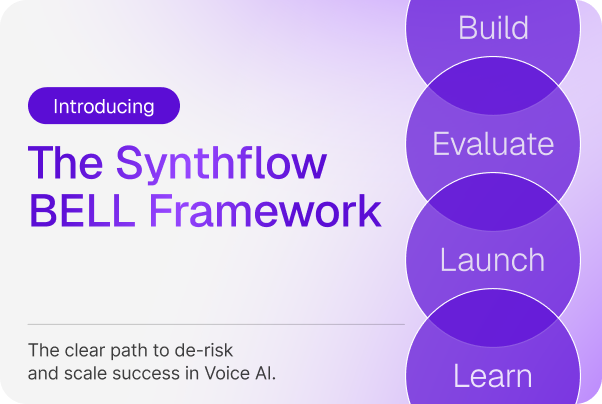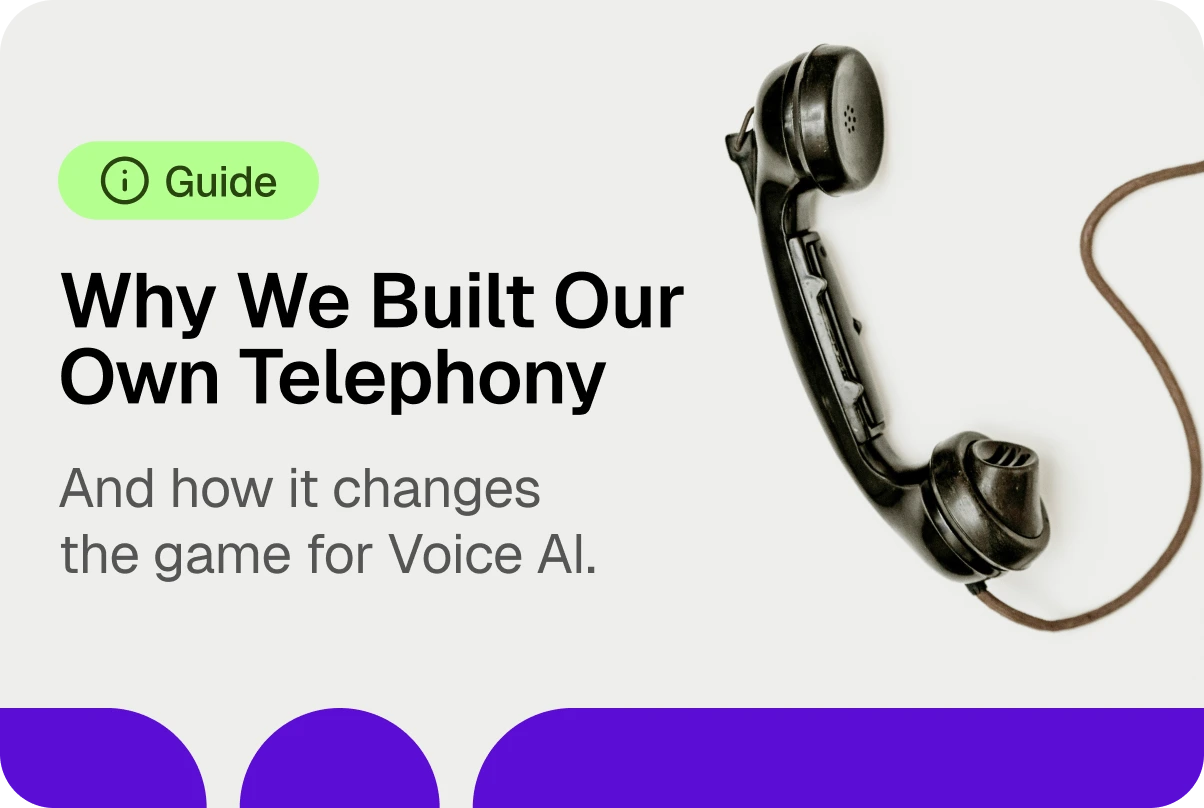Software
Honest Bland AI Review 2025: Pros, Cons, Features & Pricing

Table of Contents

For technical teams building AI voice agents from the ground up, Bland AI offers a high degree of control. Its API-first architecture, webhook integrations, and programmable workflows make it a powerful option for developers who want to custom-build every step of their voice stack.
But as voice AI moves from experimentation to production, the demands change. Teams exploring enterprise-scale automation with Bland AI will likely find themselves rebuilding key components from scratch or relying heavily on engineering resources. We now need tools that support rapid iteration, cross-functional collaboration, and enterprise-grade reliability—not just flexibility.
This review unpacks where Bland AI performs well, where it introduces friction, and how it compares to more deployment-focused platforms like Synthflow.
Verdict: 6.9/10
Key Features of Bland AI
- Voice API with real-time audio synthesis: Generate live, human-like speech via API.
- Drag-and-drop agent builder (basic): Create simple call flows with a visual editor.
- Twilio, Vonage, and BYOC telephony integration: Connect through standard or custom telephony.
- Post-call analysis: View basic summaries after each call.
- GPT-compatible prompts: Use GPT-3.5 or 4 prompts in your agents.
- Voice cloning (beta): Test custom voices with early access.
- SOC 2 and HIPAA certifications: Built for secure and compliant deployments.
- Basic reporting via API: Export call data with simple API requests.
Pros
- Full control via API
- HIPAA and SOC 2 certified
- Supports BYOC and multiple telephony platforms
- Webhook architecture is flexible
- Offers beta access to voice cloning
Cons
- No visual sandbox or testing tools
- No-code setup not available
- Latency sits around 800ms
- English-only support
- Lacks ISO 27001 and on-prem options
Bland AI Pricing
Bland AI offers a simple rate of $0.09 per outbound minute and $0.04 per inbound minute, with $15 per month for number rental. This simplicity can be misleading.
Advanced features like voice cloning, transcription, and LLM processing are billed separately. These add-ons can increase overall usage costs significantly.
Customers typically require a minimum operational budget of $150K annually, particularly when handling mid to high call volumes.
The pricing also lacks flexibility. There are no bundled plans, discounted tiers, or startup-ready offers. This makes Bland less accessible to growth-stage companies or those in early proof-of-concept stages.
In comparison, Synthflow starts at $0.08 per minute and includes a wide set of features in its base pricing. Teams receive real-time call logging, built-in dashboards, multi-language voices, and onboarding assistance without add-on charges.
Synthflow's minimum budget starts at $15K per year, making it better suited for agile teams that want faster time to deployment and full cost transparency. Having been awarded G2 Spring’s Best Estimated ROI among AI Agents, Synthflow boasts pricing that fits any business.
Verdict: 5.5/10
Bland AI Usability and Interface
Bland AI is intentionally designed for developers. The dashboard provides access to call logs, agent configurations, and webhook endpoints. There are no visual tools for non-technical users.
While a basic drag-and-drop builder is available, it is too limited for teams looking to build complex agents. You cannot test flows in real time, map fallback logic visually, or deploy multi-step LLM chains without coding.
In the Deepgram–Opus Research study, only ~3% of organizations cited limited knowledge or personnel as a barrier to voice AI adoption. There are no accessibility features for sales teams, CX leads, or product managers. All major changes must be pushed through code.
Synthflow provides a fully visual, no-code interface that supports both technical and non-technical stakeholders. You can test prompts, deploy agents, and troubleshoot flows directly within the GUI.
Verdict: 5.5/10
Bland AI Voice Quality and Latency
Bland AI’s voice quality is basic. While it supports real-time TTS, the voices often feel synthetic and lack expressiveness. Responses can sound robotic, particularly in emotionally sensitive interactions.
Average latency is around ~800ms, which may be acceptable for simple calls but creates awkward pauses during dynamic conversations. This matters as more than 80% of voice AI adopters rank real-time response speed as a top priority.
Another major limitation is language support. Bland AI supports English only, with additional languages available only through custom enterprise deals.
In contrast, Synthflow delivers latency <500ms, supports 50+ languages, and provides high-quality voices capable of carrying emotion, tone shifts, and brand-aligned delivery.
This makes Synthflow better suited for outbound sales, global customer support, and localized experiences.
Verdict: 6/10
Bland AI Developer Capabilities
This is Bland AI’s strongest area. Developers have access to a programmable interface that includes:
- Real-time audio stream injection
- Custom webhook routing
- GPT-4 prompt chaining (via API)
- SIP trunking and BYOC support
- Number provisioning with Twilio and Vonage
- Basic analytics through webhooks
But the lack of a visual sandbox or integrated agent testing slows iteration. You must test via live calls or write your own interface.
Voice cloning is still in beta and not yet optimized for real-world scale. The platform also lacks native tools for handling multiple prompts or fallback trees.
Synthflow offers a no-code builder, plus full access to developer APIs and real-time LLM sandboxing. You can build, test, and deploy agents within the same workspace.
Verdict: 7.5/10
Bland AI Security and Compliance
Bland AI meets basic compliance standards. It is certified for SOC 2 Type II and HIPAA, with encryption in transit and at rest.
But it stops short of full enterprise readiness. It does not offer:
- ISO 27001 certification
- Custom RBAC controls
- Audit logs or access trails
- On-premise hosting
These limitations could be a blocker for teams in finance, insurance, or healthcare requiring strict internal data controls.
Synthflow supports SOC 2, HIPAA, ISO 27001, custom role-based access, detailed audit logs, and optional on-prem hosting for regulated industries.
Verdict: 7/10
Bland AI Customer Support
Support is community-driven, primarily via Discord. While the developer community is active, it lacks formalized customer success processes.
There are no SLAs unless negotiated, and onboarding is mostly self-guided. For production teams needing a support plan, this can introduce risk and delay.
There is no live chat, no ticket system with prioritization, and no dedicated account manager unless you upgrade to an enterprise plan.
Synthflow offers Slack and email support, onboarding walkthroughs, and dedicated success managers for enterprise accounts. Support tiers scale with usage and deployment size.
Verdict: 6/10
Bland AI Review
Bland AI gives full API access to developers building voice agents. For teams that prefer code-first workflows, this can be a major advantage.
But the lack of a no-code interface, limited testing tools, and English-only support make it harder to use in production scenarios.
It is best suited for internal tools, MVPs, or teams with in-house AI engineers. It is not ideal for customer-facing deployments without additional infrastructure and development work.
Verdict: 6.9/10
Synthflow: The Better Bland AI Alternative
If your team wants to deploy AI voice agents in weeks, not months, Synthflow is the better choice. It includes advanced voice capabilities, a true no-code builder, and a full suite of developer API
Synthflow offers flexibility for both startups and enterprise teams. You can build and deploy your first agent with zero engineering support, or integrate with existing systems using Synthflow's developer tools.
Start your 14-day Synthflow trial today and test it risk-free.
FAQs
Who is Bland AI best for?
Bland AI works best for developer-heavy teams building custom voice agents from scratch. If you have strong engineering support and want to control every detail via API, it can be a good fit.
Can non-technical users use Bland AI?
Not easily. While there is a drag-and-drop builder, it is very limited. Most workflows require coding, and there are no real-time testing tools or GUI features for business users.
Does Bland AI support multilingual voice agents?
Only English is supported by default. Other languages may be available through custom enterprise deals but are not offered natively in the product.
What kind of support does Bland AI offer?
Support is mostly community-driven through Discord. There are no guaranteed response times, no ticketing system, and no dedicated onboarding unless you are on a high-tier plan.
What is the biggest drawback of Bland AI?
The biggest drawback is the lack of a no-code interface and the high latency. This makes it difficult to build fast, production-ready voice agents without a dedicated development team.
How does Synthflow compare to Bland AI?
Synthflow includes no-code tools, multilingual voice support, sub-500ms latency, and better pricing. It also comes with onboarding help, live support, and built-in testing tools, making it easier for teams to deploy agents without writing code.
Is there a free trial for Bland AI?
No. Bland AI does not offer a public free trial. All usage is paid and billed per minute, with separate charges for features like transcription and voice cloning.
Does Bland AI meet compliance needs for healthcare or finance?
Bland AI is HIPAA and SOC 2 certified, which is suitable for some industries. But it does not include ISO 27001, audit logs, or custom RBAC, which are often required for regulated sectors.
Can you build production-ready agents with Bland AI?
Yes, but it requires more time and technical effort. You will likely need to build internal testing tools, fallback systems, and voice routing logic yourself.



.avif)